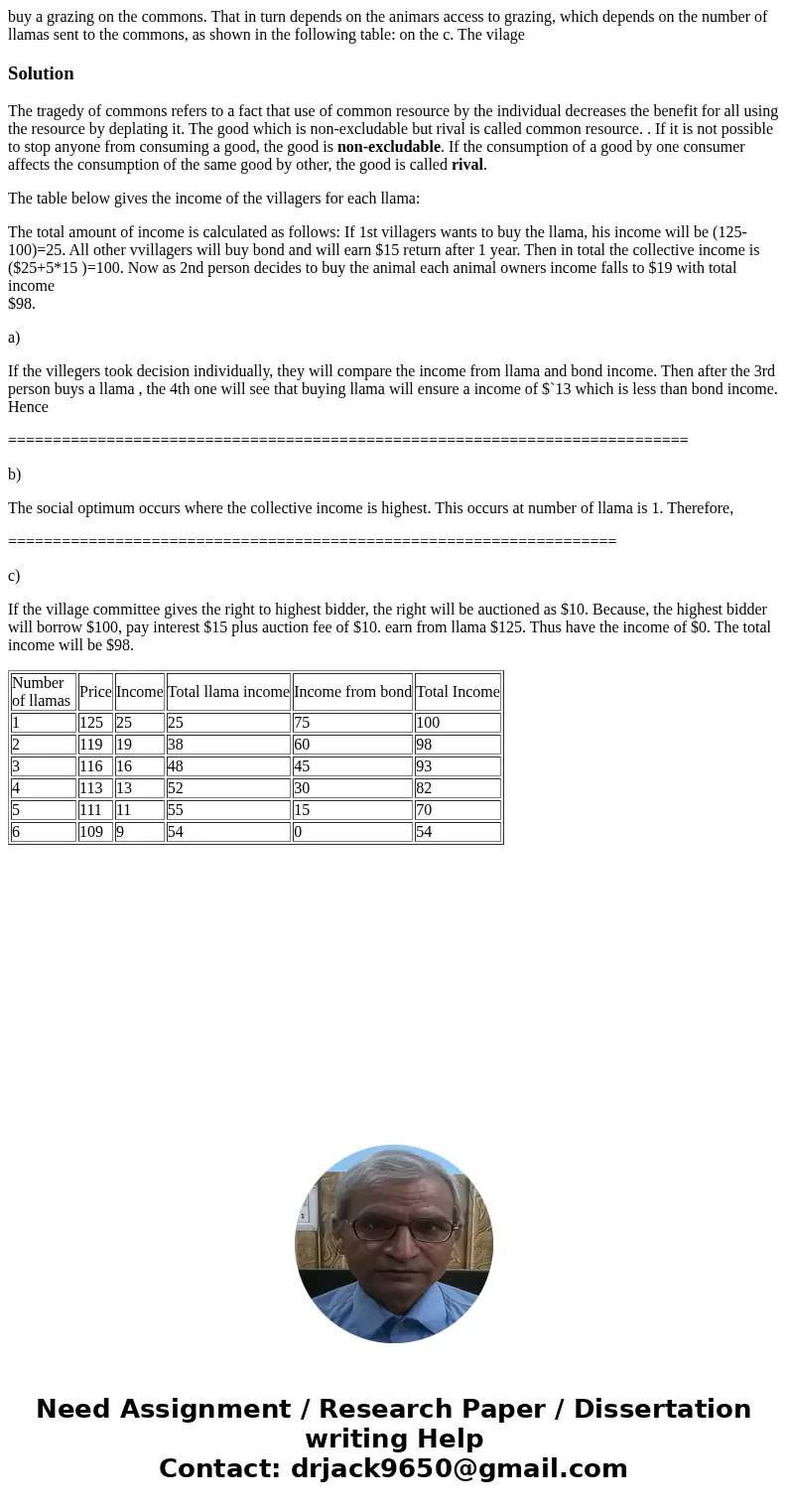buy a grazing on the commons That in turn depends on the ani
Solution
The tragedy of commons refers to a fact that use of common resource by the individual decreases the benefit for all using the resource by deplating it. The good which is non-excludable but rival is called common resource. . If it is not possible to stop anyone from consuming a good, the good is non-excludable. If the consumption of a good by one consumer affects the consumption of the same good by other, the good is called rival.
The table below gives the income of the villagers for each llama:
The total amount of income is calculated as follows: If 1st villagers wants to buy the llama, his income will be (125-100)=25. All other vvillagers will buy bond and will earn $15 return after 1 year. Then in total the collective income is ($25+5*15 )=100. Now as 2nd person decides to buy the animal each animal owners income falls to $19 with total income
$98.
a)
If the villegers took decision individually, they will compare the income from llama and bond income. Then after the 3rd person buys a llama , the 4th one will see that buying llama will ensure a income of $`13 which is less than bond income. Hence
============================================================================
b)
The social optimum occurs where the collective income is highest. This occurs at number of llama is 1. Therefore,
====================================================================
c)
If the village committee gives the right to highest bidder, the right will be auctioned as $10. Because, the highest bidder will borrow $100, pay interest $15 plus auction fee of $10. earn from llama $125. Thus have the income of $0. The total income will be $98.
| Number of llamas | Price | Income | Total llama income | Income from bond | Total Income |
| 1 | 125 | 25 | 25 | 75 | 100 |
| 2 | 119 | 19 | 38 | 60 | 98 |
| 3 | 116 | 16 | 48 | 45 | 93 |
| 4 | 113 | 13 | 52 | 30 | 82 |
| 5 | 111 | 11 | 55 | 15 | 70 |
| 6 | 109 | 9 | 54 | 0 | 54 |

 Homework Sourse
Homework Sourse